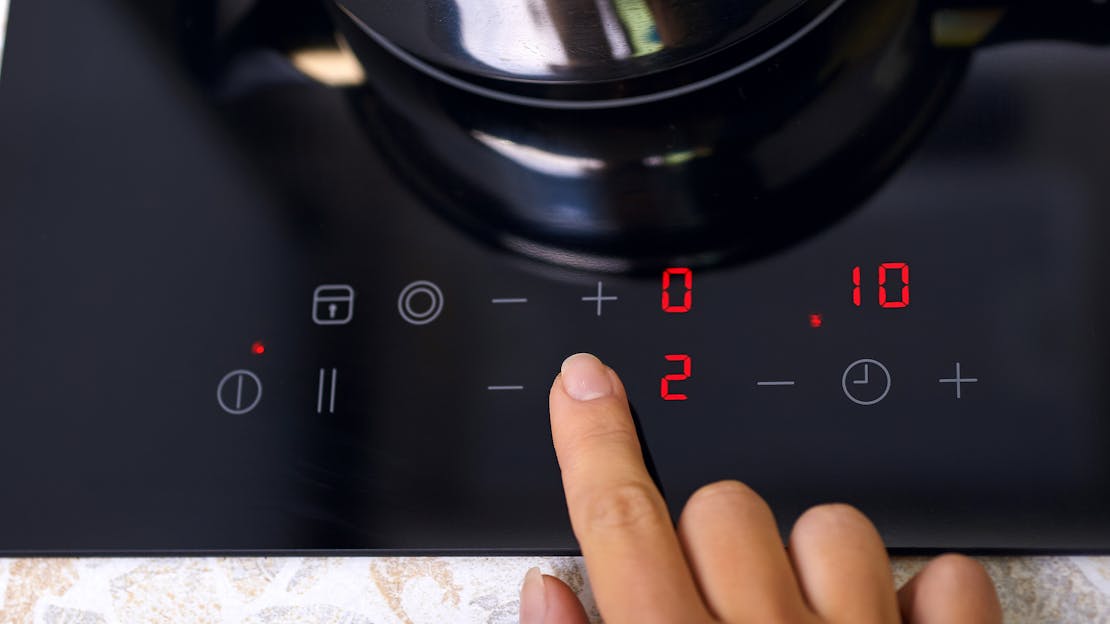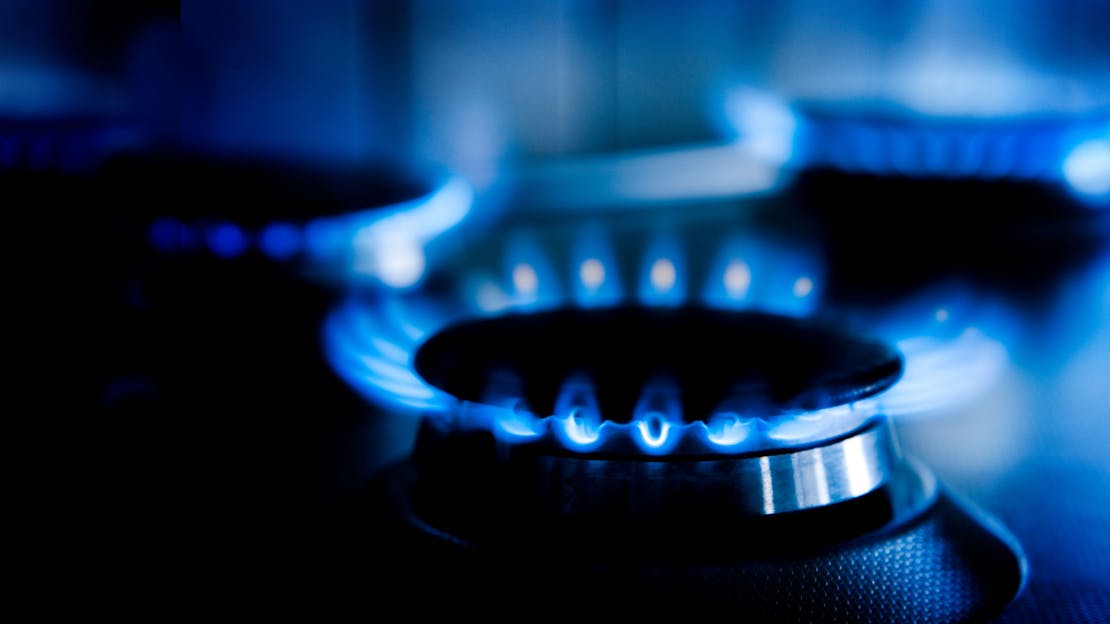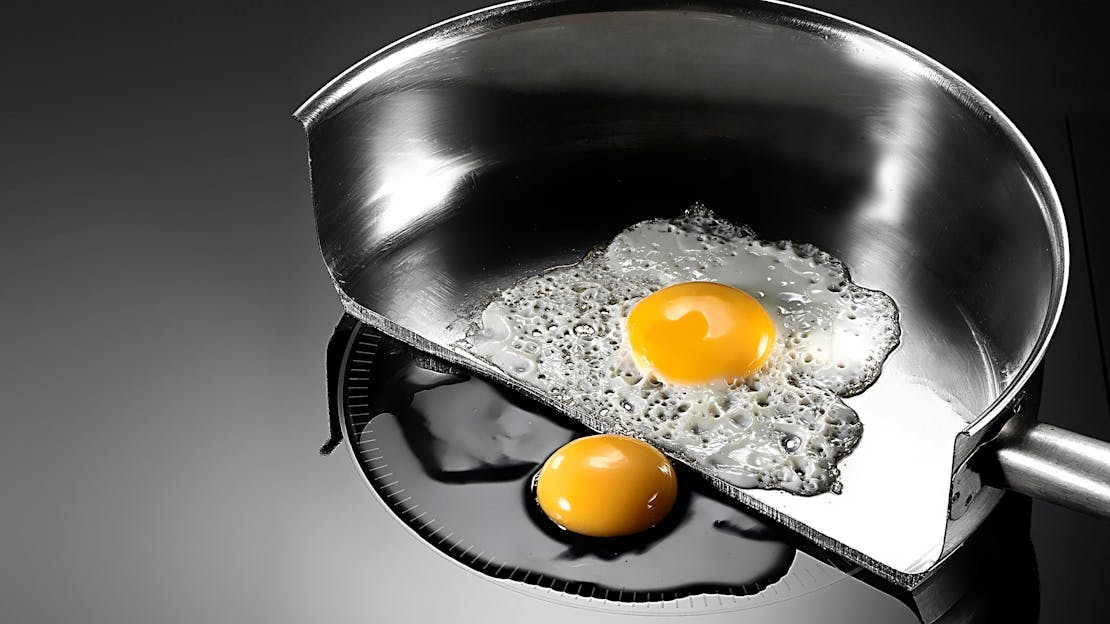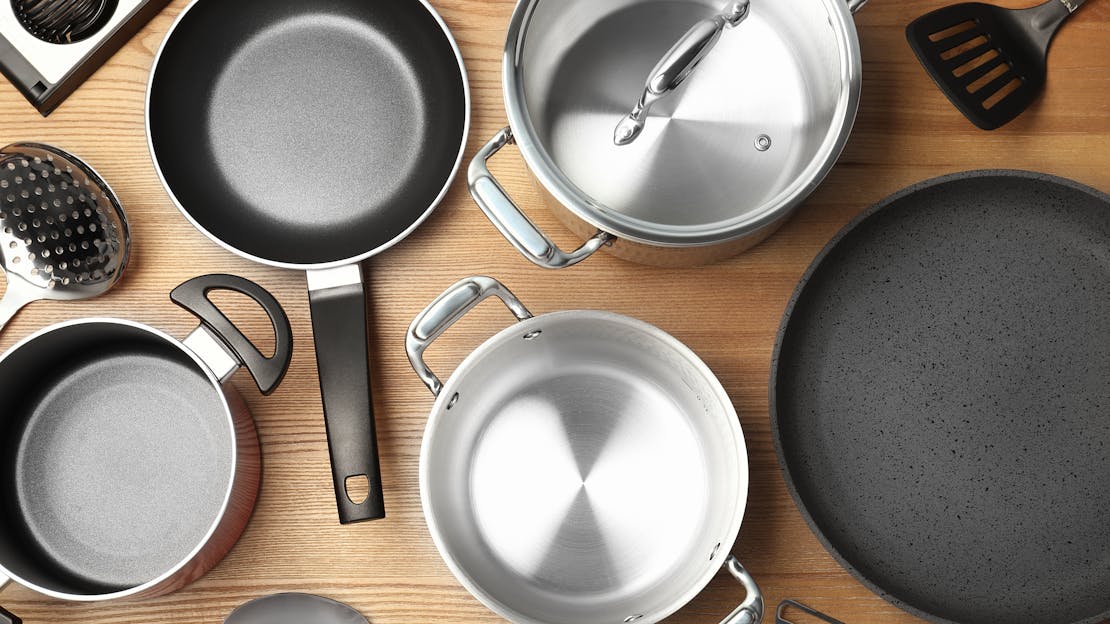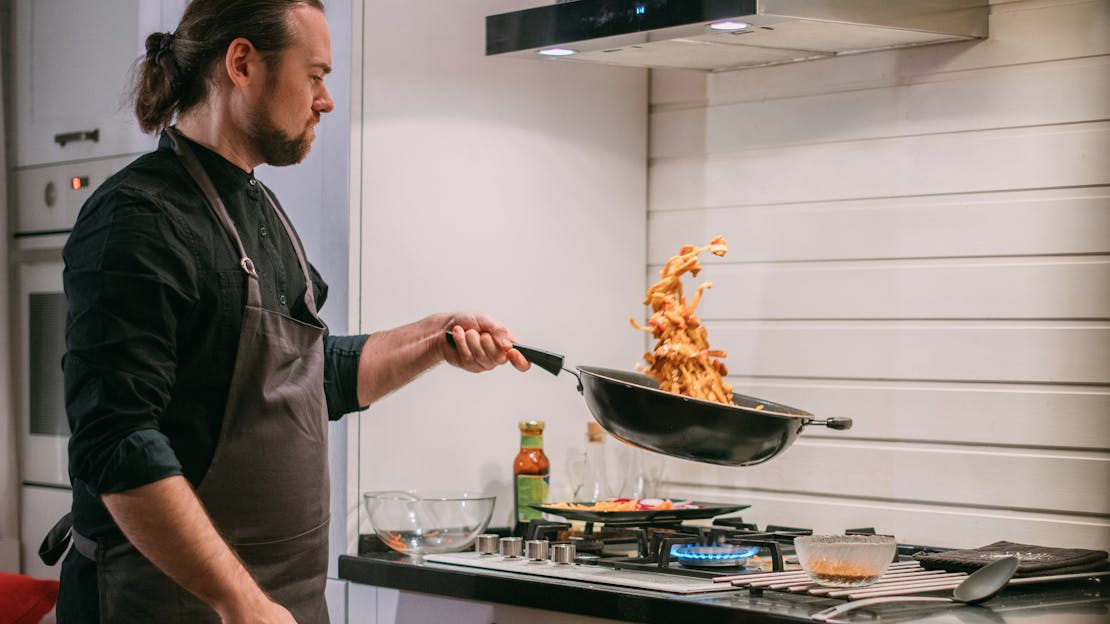
The Ultimate Guide to Gas Hobs
If you're considering purchasing a gas hob for your kitchen, this guide will provide you with all the essential information you need to make an informed decision. Throughout this guide, we'll explore the advantages, safety considerations, installation process, cleaning tips, and cost considerations associated with gas hobs.
What is a gas hob
A gas hob, also known as a gas cooktop or gas stove, is a kitchen appliance used for cooking that is fuelled by natural gas or liquefied petroleum gas (LPG). It is typically built into a countertop or kitchen unit and consists of several gas burners that provide heat for cooking.
A gas hob usually features multiple burners, typically ranging from two to six, although the exact number can vary depending on the model. Each burner has a control knob that allows the user to adjust the flame intensity, providing precise temperature control during cooking. The burners are designed to distribute heat evenly across the bottom of pots and pans, making them suitable for various cooking techniques such as boiling, simmering, frying, and sautéing.
What are the safety benefits to a gas hob
Gas hobs offer several safety benefits when used properly and maintained correctly. Here are some of the safety advantages associated with gas hobs:
Immediate heat control: One of the primary safety benefits of gas hobs is the instant heat control they provide. The flame can be adjusted quickly and precisely, allowing for immediate temperature changes when cooking. This feature enables you to respond promptly to potential hazards, such as preventing food from boiling over or adjusting heat levels to avoid burning.
Visual flame indication: Gas hobs have a visible flame, which serves as a visual cue for the heat intensity. You can easily see if the burners are on or off, allowing you to verify their status at a glance. This feature helps prevent accidental burns or gas leaks by providing a clear indication of whether the stove is in use or not.
Energy source independence: Gas hobs can continue to function during power outages since they don't rely on electricity for heating. This can be particularly beneficial during emergencies or situations where electricity supply is disrupted. You can still cook meals using gas hobs, ensuring that you have access to a cooking option even without electrical power.
Reduced fire risk: Gas hobs tend to have a lower fire risk compared to some other cooking methods. With gas burners, the heat source is confined to the burners themselves, reducing the risk of accidental fires spreading beyond the immediate cooking area. However, it's important to practice safe cooking habits, such as keeping flammable materials away from open flames and always monitoring the cooking process.
While gas hobs offer safety benefits, it's essential to maintain and use them correctly. Regular maintenance, proper ventilation, and adherence to safety guidelines are crucial to ensure the safe operation of gas hobs.
How do I install a gas hob
Once you've made the choice to invest in a gas hob, it is crucial to prioritise safety and enlist the assistance of a Gas Safe Registered fitter for the installation. Gas Safe Registered fitters are certified professionals who have undergone training and assessment to ensure competence in working with gas appliances. By opting for a Gas Safe Registered fitter, you can have confidence that the installation will be handled by someone with the requisite knowledge and skills to ensure a safe and compliant setup.
Installing a gas hob involves dealing with gas connections, which can be potentially hazardous if not executed correctly. Gas leaks or improper installations can lead to serious safety risks, including fire hazards and carbon monoxide poisoning. To mitigate these risks, it is strongly advised to rely on the expertise of a Gas Safe Registered fitter who is well-versed in handling gas appliances and adhering to safety protocols.
Does a gas hob need electricity
Yes, gas hobs require electricity to operate certain features. While the main source of heat comes from the gas burners, electricity is needed for specific functions such as ignition, control knobs, and safety features.
Ignition: Most modern gas hobs utilise electric ignition systems to light the gas burners. These ignition systems are either in the form of a spark ignition or a continuous electric pilot flame. When you turn the knob to ignite a burner, an electric spark or flame ignites the gas, starting the combustion process.
Control knobs: Gas hobs often have control knobs that allow you to adjust the flame intensity and control the heat output of each burner. These knobs typically have electrical components, such as switches or sensors, that help regulate the gas flow and ensure safety features are functioning correctly.
Safety features: Gas hobs may incorporate safety features that require electricity. These can include flame failure devices (FFD) or thermocouples. FFDs monitor the presence of a flame and automatically shut off the gas supply if the flame goes out, preventing gas leaks. Thermocouples are sensors that detect heat and help control the gas flow based on temperature changes.
It's important to note that while electricity is needed for ignition and certain safety features, gas hobs can still function for cooking during power outages. However, without electricity, the ignition system won't work, so you'll need to manually ignite the burners using a match or lighter.
Always refer to the manufacturer's instructions for the specific requirements and electrical connections of your gas hob model. Additionally, consult with a qualified professional for any electrical or gas-related installations or repairs to ensure compliance with safety standards.
Which hob gas or induction
The choice between a gas hob and an induction hob depends on your personal preferences and specific needs. Both types of hobs have their own advantages and considerations. Here's an overview of the characteristics of each:
Gas Hob:
Instant heat control: Gas hobs offer immediate and precise heat control. You can easily adjust the flame intensity, providing a wide range of temperature options for different cooking techniques.
Visual flame indication: Gas hobs provide a visible flame, allowing you to see if the burners are on or off at a glance.
Compatibility with various cookware: Gas hobs work well with a wide range of cookware materials, including cast iron, stainless steel, and copper.
Energy source independence: Gas hobs can continue to function during power outages since they do not rely on electricity for heating.
Requires gas supply and ventilation: Installation requires a gas supply and proper ventilation. Gas hobs also need periodic maintenance, such as cleaning and checking for gas leaks.
Induction Hob:
Fast and efficient heating: Induction hobs use electromagnetic fields to directly heat the cookware, resulting in fast and efficient heating. They can bring water to a boil significantly faster than gas hobs.
Precise temperature control: Induction hobs offer precise temperature control, allowing you to set specific heat levels for consistent cooking results.
Enhanced safety features: Induction hobs do not generate direct heat on their surface, making them safer to touch compared to gas hobs. They also typically have features like automatic shut-off and pan detection.
Energy-efficient: Induction hobs are highly energy-efficient, as they transfer heat directly to the cookware without wasting excess heat.
Requires compatible cookware: Induction hobs require the use of induction-compatible cookware, which is typically made of ferrous materials like cast iron or stainless steel. Non-compatible cookware, such as aluminium or copper, won't work unless they have an induction-compatible base.
Ultimately, the choice between a gas hob and an induction hob depends on factors such as your cooking style, preferences, and the infrastructure of your kitchen (e.g., gas supply availability, electrical requirements). Consider your specific needs, features that are important to you, and the trade-offs associated with each type of hob to make an informed decision.
What to clean gas hob with
To clean a gas hob, you can use the following materials and methods:
Warm soapy water: Start by removing any loose debris or food particles from the gas hob surface. Prepare a solution of warm water and mild dish soap. Dip a soft cloth or sponge into the soapy water and gently scrub the hob surface. Avoid using abrasive materials that may scratch the surface.
Baking soda paste: For tougher stains or burnt-on residue, you can make a paste using baking soda and water. Apply the paste to the affected areas and let it sit for a few minutes. Then, use a soft cloth or sponge to scrub the stains gently. Baking soda is mildly abrasive and can help remove stubborn stains without damaging the hob surface.
Vinegar solution: If there are stubborn stains or mineral deposits on the gas hob, you can use a vinegar solution. Mix equal parts of white vinegar and water in a spray bottle. Spray the solution onto the affected areas and let it sit for a few minutes to loosen the stains. Wipe the hob surface with a cloth or sponge, and then rinse with clean water.
Cleaning products: There are also specific gas hob cleaning products available on the market. Follow the instructions provided with the product and use it according to the manufacturer's recommendations. Be sure to choose a product suitable for your gas hob's surface material and follow any safety precautions mentioned.
Burner caps and grates: Remove the burner caps and grates from the gas hob and wash them separately. Soak them in warm soapy water and use a brush or sponge to clean any stubborn stains or grease. Rinse them thoroughly and let them dry before reassembling them onto the hob.
Remember to always disconnect the gas supply and ensure that the gas hob is cool before cleaning. Additionally, consult the manufacturer's instructions for any specific cleaning recommendations or precautions related to your particular gas hob model.
Is a gas hob cheaper than electric and induction hobs
The cost of a gas hob compared to an electric or induction hob involves various factors, including the initial purchase price, operating costs, and long-term expenses. Here are some considerations:
Initial purchase price: Gas hobs generally have a lower upfront cost compared to induction hobs. Induction hobs often involve more advanced technology and typically have higher initial prices due to the cost of the induction elements and control systems.
Operating costs: The operating costs of a gas hob are primarily determined by the cost of the gas supply in your area. Natural gas or LPG (liquefied petroleum gas) prices vary by region, so it's important to consider the local gas rates when calculating the ongoing expenses. Gas hobs tend to be more energy-efficient than electric hobs, which can result in lower energy costs over time.
Energy efficiency: Induction hobs are known for their high energy efficiency. They transfer heat directly to the cookware, minimizing wasted heat and resulting in more efficient cooking. Gas hobs, while generally energy-efficient compared to electric hobs, may still have some heat loss during the cooking process.
Maintenance and repair costs: Gas hobs may require occasional maintenance, such as cleaning the burners and checking for gas leaks. Additionally, if repairs are needed, gas-related components might be more expensive to fix compared to electrical components found in electric or induction hobs.
Utility costs and infrastructure: Installing a gas hob may require access to a gas supply and proper ventilation, which might involve additional installation costs. In contrast, electric and induction hobs rely on electricity, which is typically readily available in most households.
It's essential to consider the overall costs and factors specific to your situation when comparing the expenses of different hob types. While gas hobs often have a lower initial purchase price, the long-term costs can vary depending on energy rates, usage patterns, and maintenance requirements. Assess your cooking needs, energy prices in your area, and personal preferences to determine the most cost-effective option for you.
Will gas hobs be phased out
The future of gas hobs, like any technology or appliance, depends on various factors, including energy policies, environmental considerations, technological advancements, and consumer preferences. While there is no definitive answer, it's worth noting some ongoing trends that may impact the future of gas hobs:
Energy efficiency and sustainability: There is a growing focus on energy efficiency and reducing greenhouse gas emissions. Electric appliances, such as induction hobs, are often considered more energy-efficient than gas hobs. As countries and regions strive to meet sustainability goals, there may be incentives to promote the use of electric appliances over gas appliances.
Shifting energy sources: The transition to renewable energy sources is gaining momentum in many parts of the world. As electricity generation becomes increasingly reliant on renewable energy, the environmental advantages of electric appliances may become more pronounced, potentially influencing consumer choices and government regulations.
Consumer preferences and demand: Consumer preferences play a significant role in shaping the market. While electric appliances, including induction hobs, are gaining popularity, gas hobs still have a significant user base. Some individuals prefer the control and familiarity of gas cooking, and there may continue to be a demand for gas hobs in the foreseeable future.
Government regulations and policies: Government regulations can influence the market for gas hobs. Some countries or regions have implemented or are considering measures to phase out fossil fuel-based appliances, including gas hobs, in favour of electric alternatives. However, the extent and timeline of such regulations vary across jurisdictions.
It's important to note that gas hobs are still widely used and continue to be available in the market. However, as energy priorities and technologies evolve, it's possible that the demand for gas hobs may change. The trajectory and speed of any potential phasing out will likely depend on a combination of environmental concerns, technological advancements, government policies, and consumer preferences.
Top Selling Hobs from MyAppliances
Discover the epitome of cooking versatility with our leading range of hobs, featuring induction, gas, and ceramic options. Engineered to meet the demands of modern kitchens, our best sellers combine innovative technology with sleek design to deliver exceptional performance every time. Explore our top picks today and revolutionise your cooking space.
-
Hob Buying Guides
Deciding which hob to buy can be challenging, given the range of options available. This guide aims to simplify the process by detailing the various aspects of induction, ceramic, and gas hobs.
-
Hob Buying Guides
If you're considering upgrading your kitchen hob, you may find yourself mulling over the fascinating world of induction hobs. As one of the leading manufacturers of all types of hobs, we're here to help navigate you through this often bewildering terrain. Welcome to the Ultimate Induction Hob Buying Guide!
-
Hob Buying Guides
Ceramic hobs have revolutionised cooking, offering a sleek and modern aesthetic combined with practical and efficient functionality. So what exactly is a ceramic hob?
-
Hob Buying Guides
Offering a traditional way to cook food on a hob, our gas hobs here at MyAppliances are simple to use and will instantly update your kitchen.
-
Hob Buying Guides
Extremely easy to use, our ceramic hobs are a dream to clean, too. With handy touch control features, these appliances offer value for money and a fuss-free way to cook.
-
Hob Buying Guides
Economical and well-designed, our induction hobs here at MyAppliances come in a range of sizes and are easy to install, too.
-
Hob Buying Guides
This guide navigates through a spectrum of hob types — from the venerable gas hob to the cutting-edge induction cooker — each demanding a specific pan companionship.


